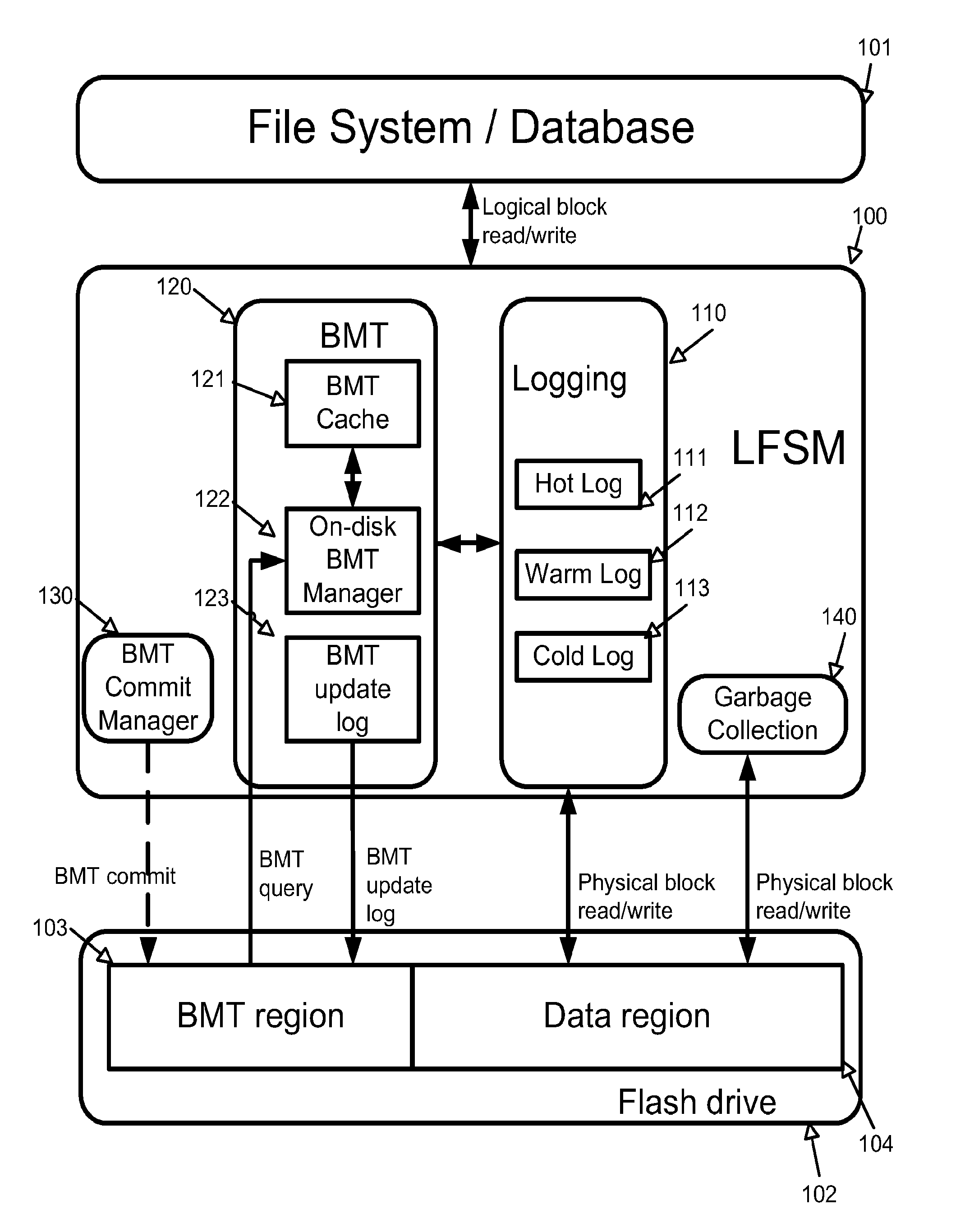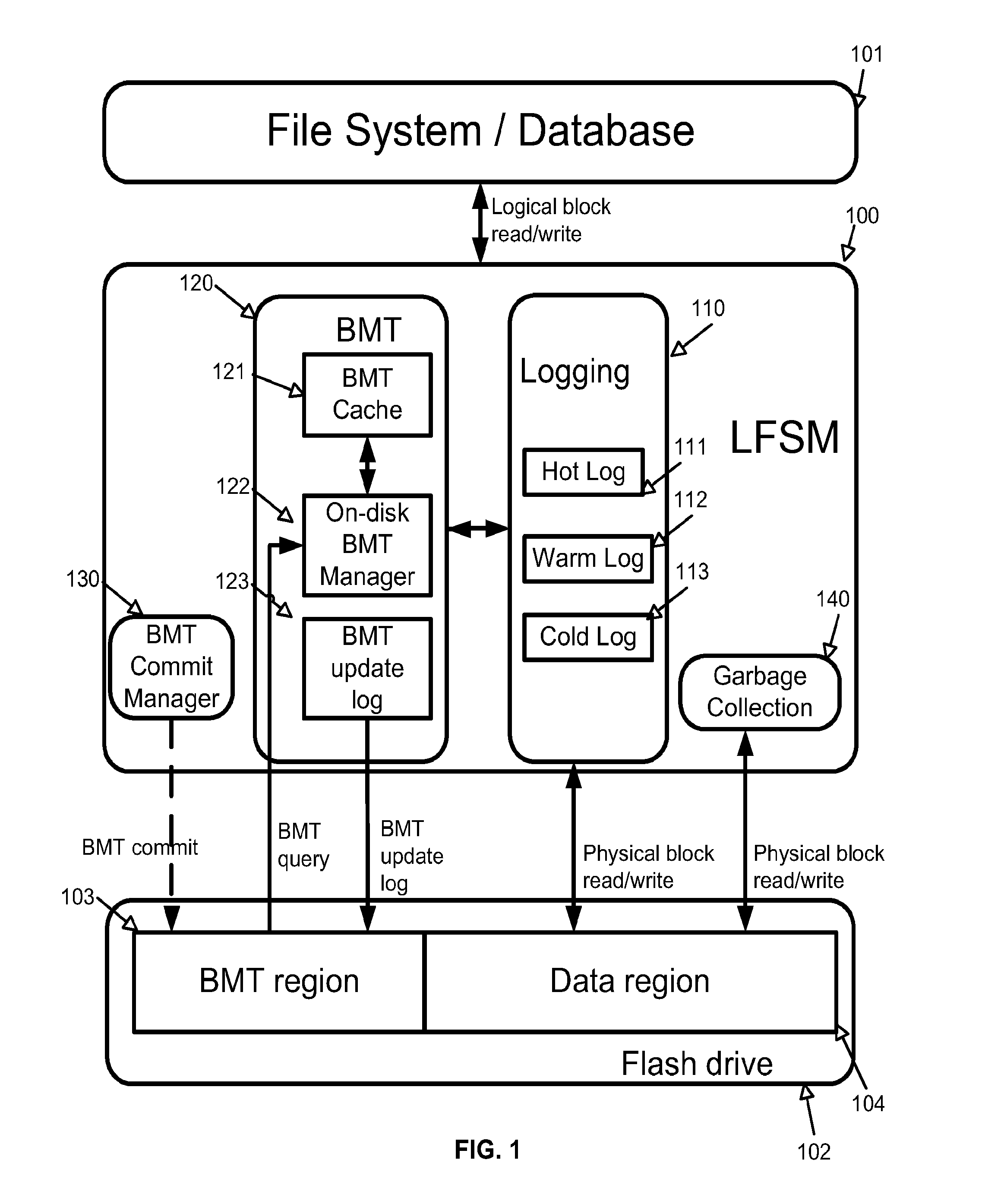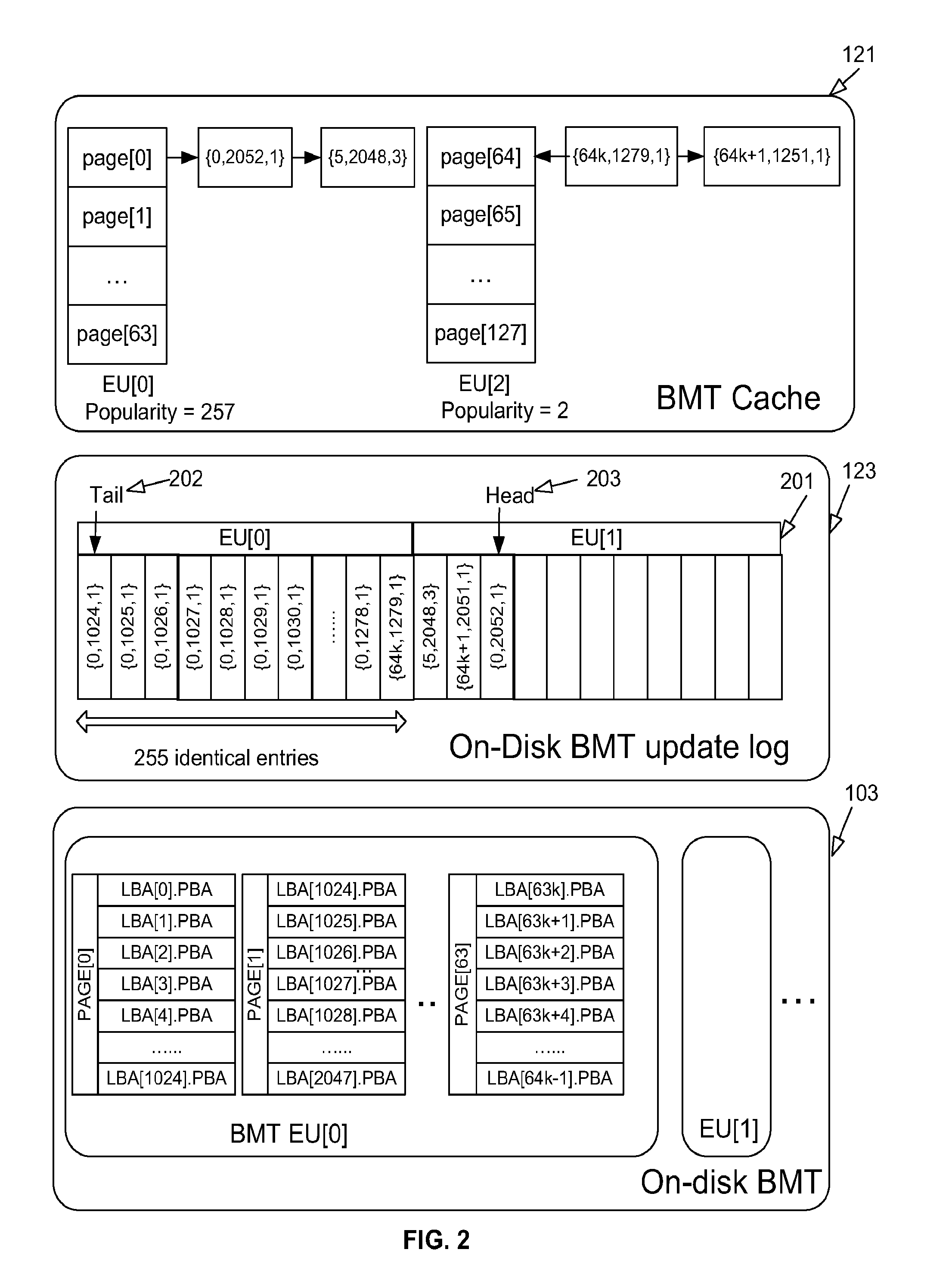Random write optimization techniques for flash disks
a random write and optimization technology, applied in the direction of memory architecture accessing/allocation, instruments, computing, etc., can solve the problems of flash disk performance, inability to easily address, and still expensive flash disk technology
- Summary
- Abstract
- Description
- Claims
- Application Information
AI Technical Summary
Benefits of technology
Problems solved by technology
Method used
Image
Examples
Embodiment Construction
[0022]Hereinafter, embodiments of the present invention will be described in detail with reference to the accompanying drawings. In the following description of the present invention, a detailed description of known technologies incorporated herein will be omitted when it may obscure the subject matter of the present invention.
[0023]To address the random write performance problem of the prior art flash disks, a Log-structured Flash Storage Manager (LFSM) of the present invention converts all random writes into sequential writes to a set of unified logs by introducing an additional level of indirection above the Flash Translation Layer (FTL). Because all prior art flash disks have good sequential write performance, LFSM effectively solves the random write performance problems for these prior art flash disks in a uniform way without requiring any modifications to the prior art flash disk hardware implementations. With this novel log-structured storage organization, the LFSM overcomes ...
PUM
 Login to View More
Login to View More Abstract
Description
Claims
Application Information
 Login to View More
Login to View More - R&D
- Intellectual Property
- Life Sciences
- Materials
- Tech Scout
- Unparalleled Data Quality
- Higher Quality Content
- 60% Fewer Hallucinations
Browse by: Latest US Patents, China's latest patents, Technical Efficacy Thesaurus, Application Domain, Technology Topic, Popular Technical Reports.
© 2025 PatSnap. All rights reserved.Legal|Privacy policy|Modern Slavery Act Transparency Statement|Sitemap|About US| Contact US: help@patsnap.com



